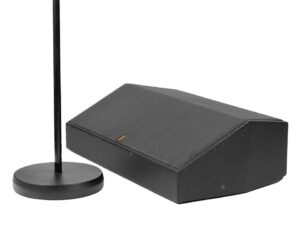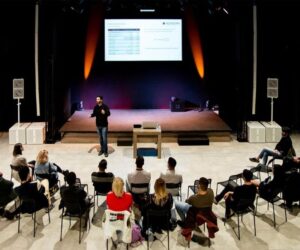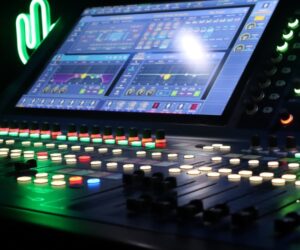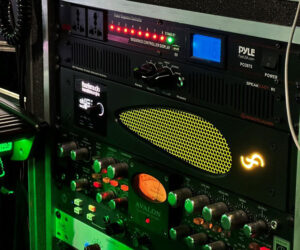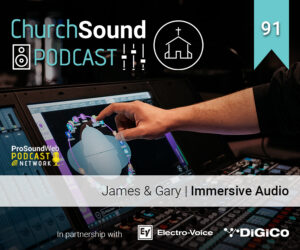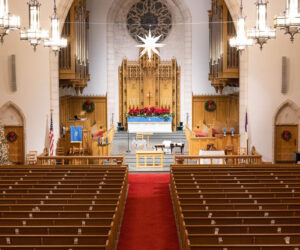Soundcraft has announced a substantial new software update for Vi2, 4 and 6 consoles.
Version 4.8 software contains a number of significant new features, with stage monitor applications in particular set to benefit most from the update.
Vi1 users also benefit from some of the new features, using the same update file, downloadable free of charge from the Soundcraft website (DSP card upgrade may be required).
The most significant of the new features is the upgrade of the bussing system on Vi2, 4 and 6 to allow all 32 of the console’s mix buses to work in stereo mode when required—without stealing any other buses—to allow use as in-ear mixes. This doubles the stereo mix capability of the Vi2, 4 and 6 consoles (the number of mono mixes remains at 32).
Also of benefit to monitor engineers; a new source selection switch has been implemented that allows each individual aux or group bus send from channels to be sourced from 4 different points in the signal path – post-fade, post-EQ and dynamics, pre-dynamics but post-EQ, and pre-EQ & dynamics (existing software only allows the first two of these points to be selected).
This gives great flexibility for creating monitor mixes for vocalists who do not want compression on their own mix, without the need to Y-split channels, and also allows more convenient operation when doing monitors from front-of-house in installed applications. In adding the new stereo bus upgrade, attention has been paid to show compatibility, ensuring sensible behavior when importing old shows into the new format, or even when importing a new format show back to a pre-4.8 console.
In order to benefit from the new audio features, Vi2, 4 and 6 consoles must have at least three DSP cards fitted to the local rack. Consoles with only two DSP cards fitted will require the purchase of a third DSP card in order to benefit from the new audio features and in this case will need to choose using an “Expansion Mode” switch between 96 inputs and the old bussing system, or 64 inputs with the new busing system. In order to have both 96 inputs and the new audio features a fourth DSP card will need to be purchased.
Vi1 consoles will not receive the “all buses can be mono or stereo” feature, pre-fade Aux send options or post-fade insert point features, due to DSP restrictions.
Yet another boost for monitor applications is a significant improvement to the aux VCA functionality. This feature, which allows the VCA master faders to control the aux sends of their member channels only for the currently selected monitor mix when the mix is on the faders, has now been made switchable on a per-VCA basis to allow the VCA to remain as the global channel VCA at all times if required.
When a VCA is operating in aux-VCA mode, a new “white/blue” FaderGlow color clearly indicates this. Monitor engineers can now retain control of important global elements such as ambient mics while having a monitor mix selected and adjusting groups of sources within the current mix using the aux-VCAs.
Of primary interest to corporate sound engineers, a new post-fade option for the channel insert point has been added, making it possible to work more effectively with inserted automixer units such as the popular Dugan units.
The features described above use a significant amount of DSP resources, and are consequently only available on Vi2, 4 and 6 consoles that are fitted with three or four DSP cards. While these features are not available on Vi1 consoles, there are other new features within the 4.8 update that benefit Vi1 as well as the other consoles, such as those following.
For front of house applications, a much requested improvement is the addition of stereo capability for matrix buses. On Vi1 and Vi2, 4 and 6 consoles with only two-DSP cards, this feature allows mono matrix buses to be linked into stereo mode, giving a maximum of four stereo matrix on Vi1 and 8 on Vi2, 4 and 6. On Vi2, 4, and 6 with three or four DSP cards, it is now possible to have up to 16 stereo matrix buses, using the new “all buses can be mono or stereo” feature.
A new contribution pan function allows each of the matrix contribution signals, selectable from a multitude of sources including channel direct outs, bus and master outs and direct I/O patches, to be positioned within the matrix bus’s stereo field.
Also for Vi1 consoles, V4.8 software allows increased flexibility of the local I/O configuration, so for example one of the line out modules may be exchanged for a third mic/line input module, giving a total of 48 mic ins and 16 line outs on the back of the console.
For all Vi consoles, it is now possible to select a bus mix as the external key input source for the gate/ducker on input channels. This allows more flexibility particularly when using the ducker to control ambient mics for a recording or in-ear monitor mix.
Finally, for all Vi consoles, a new colored background can be chosen for the on-screen channel, bus and VCA label displays, making it possible to organize groups of sources by color coding. The color is chosen from within the on-screen qwerty keyboard, as part of the labeling workflow.
Along with the usual complement of bug fixes, the V4.8 software update represents the most significant uplift to the Vi-Series feature set for some time, and is available free of charge from the Vi product pages of the Soundcraft web site. The Virtual Vi Offline Editor is also updated with the new features.
The new software is in final beta-testing, and is expected to be released by the end of May.





